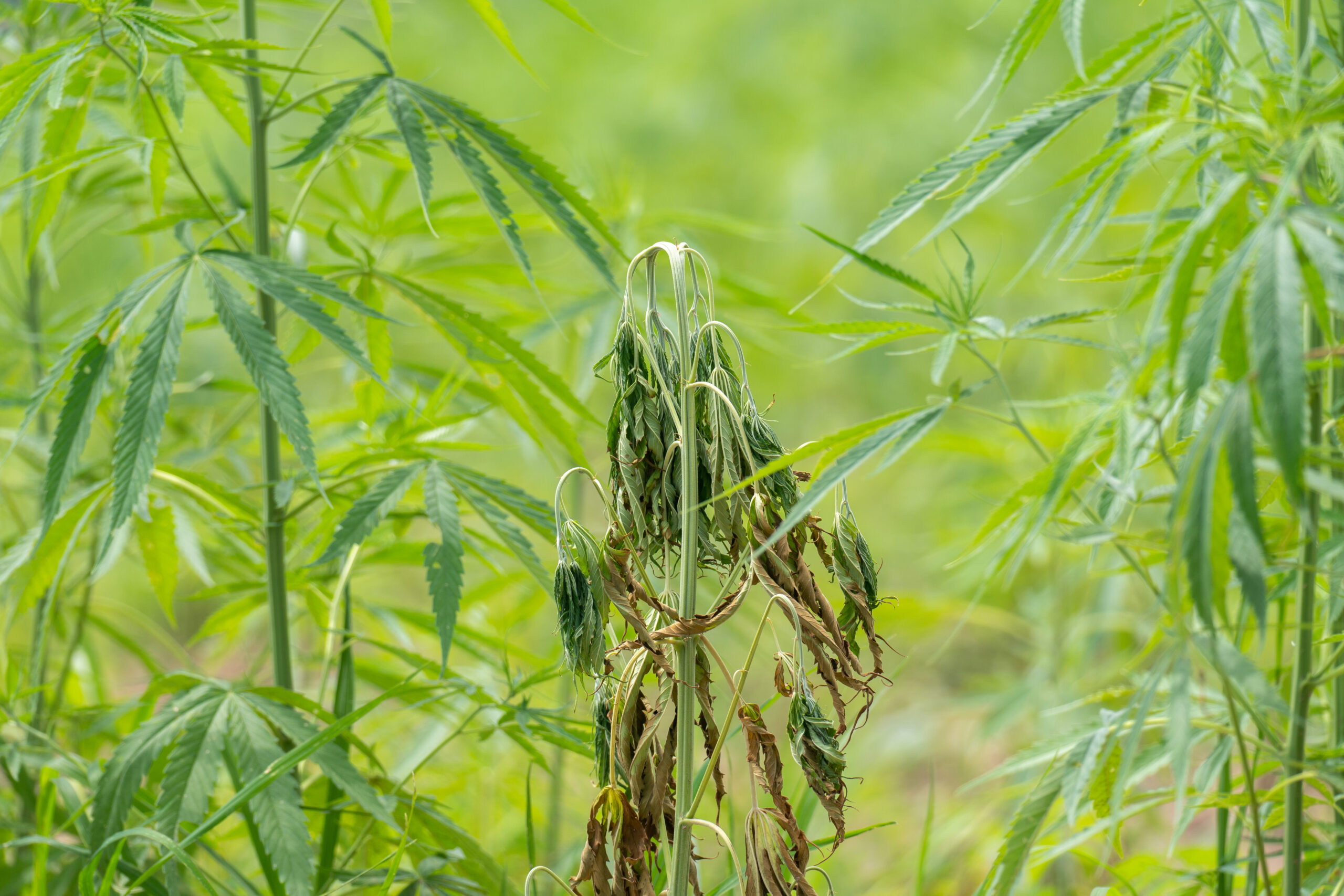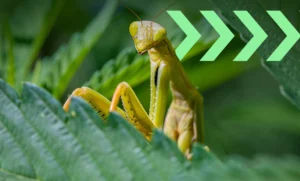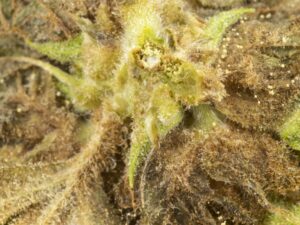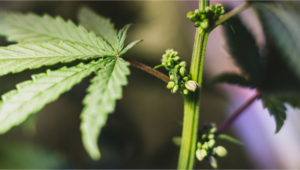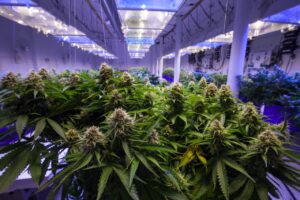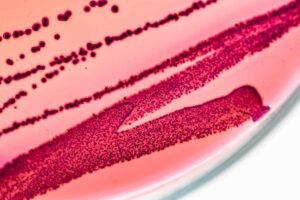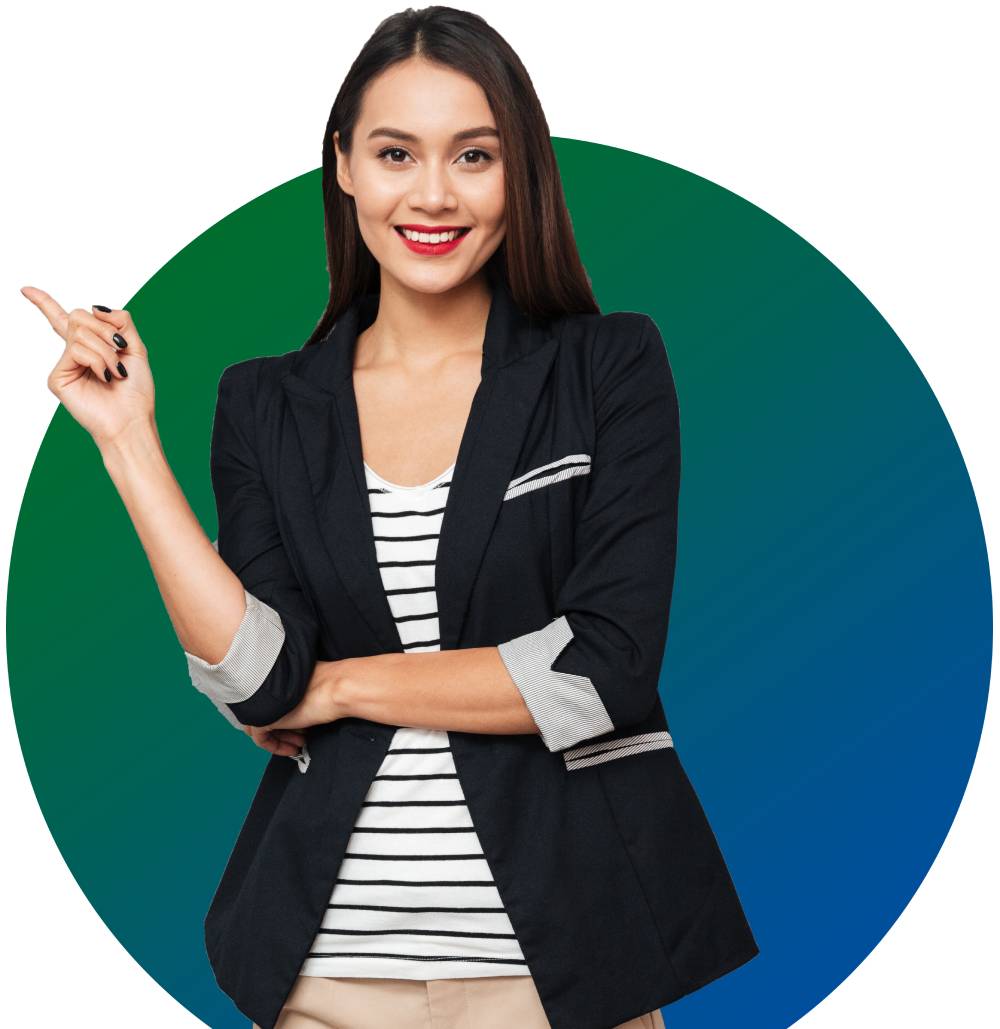Plant pathogens cost the global economy around $220 billion annually, according to the Food and Agriculture Organization of the United Nations. While the study of plant pathogens affecting Cannabis is still in its infancy, Fusarium, Pythium, and Hop Latent Viroid (HLVd) are emerging as costly infections for cannabis growers.
The most challenging and dangerous pathogens affecting cannabis plants are the ones that:
- Cause significant damage to the plant (i.ie., reduction in plant yield and/or total crop loss)
- Easily spread to other plants via air, shared water, soil, and/or contaminated equipment
- Can avoid early detection in pre-symptomatic or asymptomatic hosts
Fusarium
- Damage: High
- Spread: High
- Avoid Early Detection: High
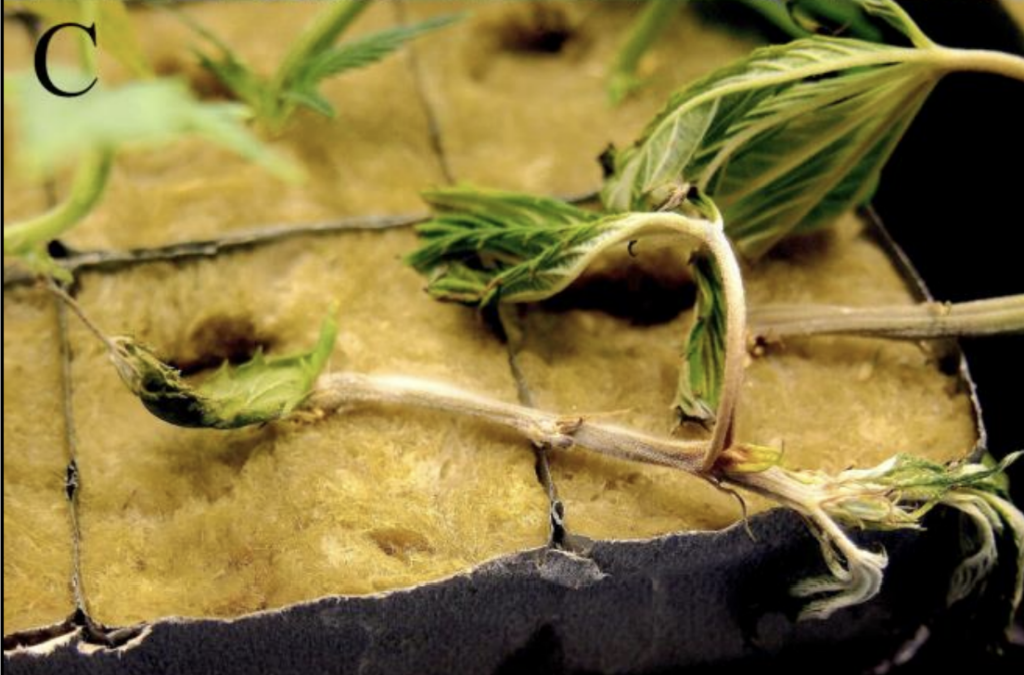
According to plant pathology expert Soren Seifi, Fusarium stands out as the “smartest” and “most dangerous” cannabis pathogen. This is because Fusarium can infect multiple tissues in the plant (roots, stem, leaves, flower, and seeds) and can spread its inoculum via air, water, soil, seeds, and clones!
“No other pathogen is so effective in dispersing its inoculum like that,” Seifi said in a LinkedIn post.
Fusarium is also devastating once it infects its host, causing root rot, crown rot, damping-off, and wilting that will lead to total plant loss. Many Fusarium species also produce harmful mycotoxins, so the resulting flower is practically useless even if plants manage to survive until harvest.
What’s more, Fusarium can remain dormant in the plant, causing no obvious signs or symptoms until the plant undergoes stress, such as transplanting, cloning, flowering, or any other environmental stress. Then the pathogen will attack by releasing cell-killing enzymes and toxins that destroy xylem tissue.
“You always need to test for key diseases,” Seifi said. “But be strictly extra cautious about the strongest and smartest pathogen that can attack you in disguise through multiple directions, the Trojan Horse enemy of cannabis plant, goes by the name Fusarium!”
Pythium
- Damage: High
- Spread: High
- Avoid Early Detection: Low
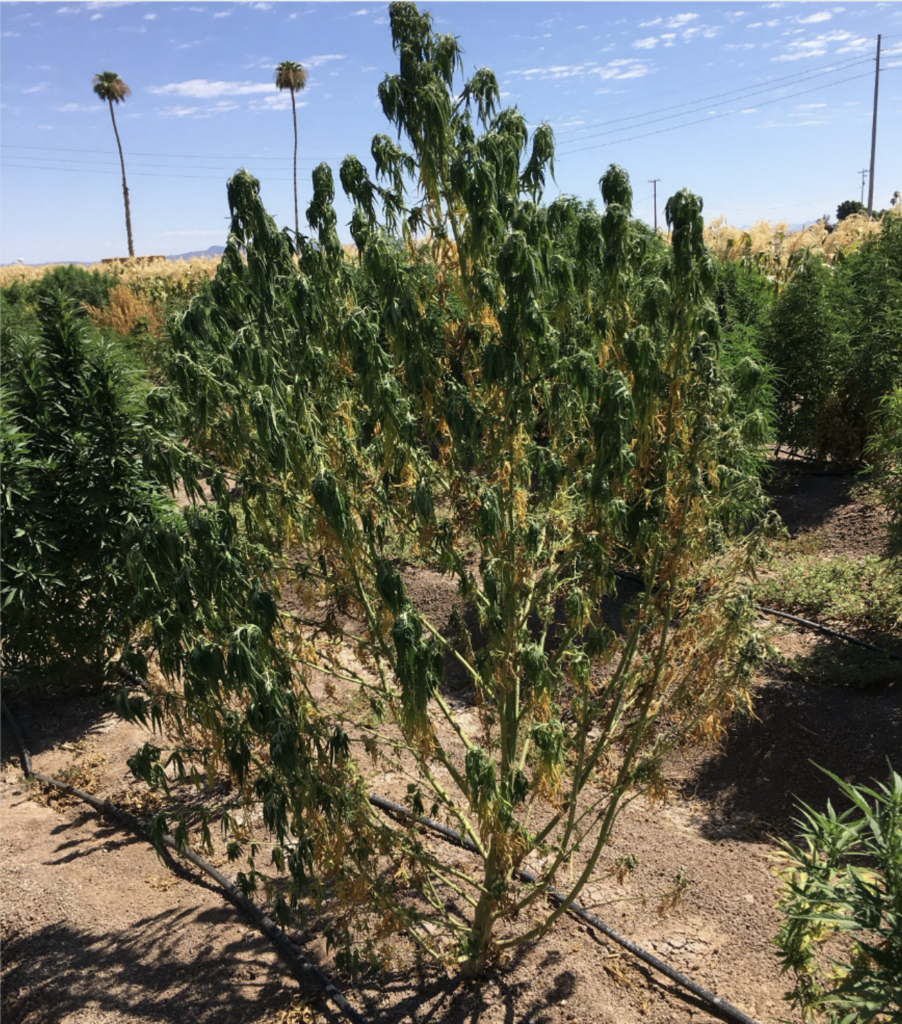
Pythium is considered a “water mold” because it is well adapted to damp environments, and requires the presence of water for infection to occur. However, Pythium species can survive in soil for long periods as sexual spores called oospores, which can infect plant roots in damp conditions. Pythium oospores can spread via water, contaminated growing media, insects, plant debris, and contaminated equipment, especially irrigation systems.
Pythium causes root browning, root rot, and crown rot in cannabis plants, resulting in stunting, wilting and ultimately plant death. It can also cause damping-off in certain crops; however, it was not observed on cannabis cuttings by Punja et. al 2021.
Under moist conditions, the pathogen produces abundant sporangia containing numerous single-celled, motile zoospores (asexual spores), which are effectively dispersed over short distances by splashing water or air movement.
Hop Latent Viroid
- Damage: Variable
- Spread: High
- Avoid Early Detection: High
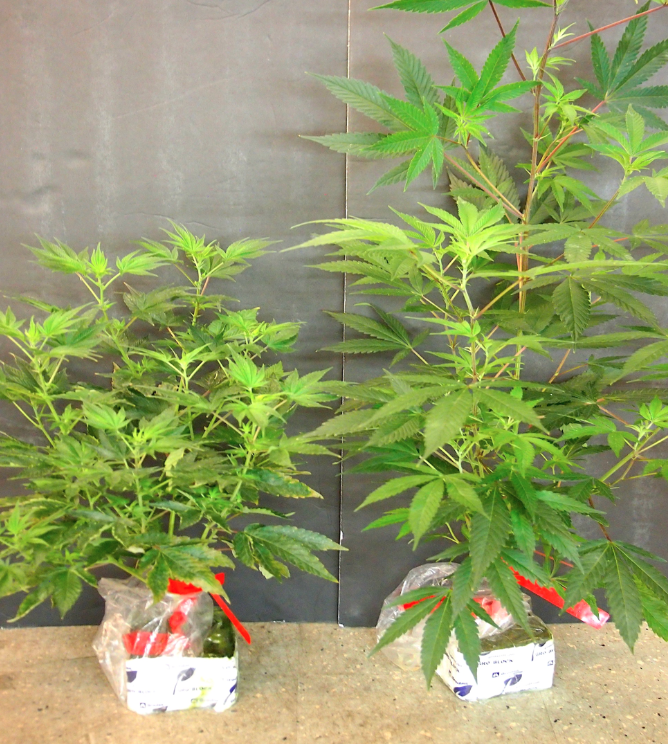
Plant pathology expert Dr. Zamir Punja dubbed HLVd the “COVID of cannabis” due to its similarity to the infamous virus. HLVd is most like COVID in that it spreads easily and produces a range of symptoms in different cultivars. Some cultivars experience obvious stunted growth and as much as 50% reduction in yield. Others remain asymptomatic all the way to harvest.
HLVd transmits most commonly when tools, equipment, and workers come into contact with infected plant sap. Cultivators should always sterilize tools, equipment, and hands with a 10% bleach solution before starting work on a new plant. Experiments performed by Medicinal Genomics showed leafhoppers may also spread HLVd when they ingest sap from an infected plant.
HLVd also spreads when cuttings are taken from an infected mother, which may not always show obvious symptoms. This is especially true when infection occurs later in the plant’s development. Growers should test mother plants before taking new cuttings and test any clones from outside the facility.
Just like with COVID, the biggest challenge to controlling HLVd is asymptomatic spread. That is why regular screening for the viroid is critical.
Combat Pathogens with Regular Testing
It takes time, but the best method for eliminating these pathogens is with a process of testing and removing infected plants. At CannMed 23, Dr. Zamir Punja demonstrated that his team used this process over a period of 7 months and reduced the HLVd positive rate in his facility from 35% to 7%.
It’s possible to use meristem tissue culture to produce clean clones; however, it is a long and laborious process. Additionally, tissue culture is not always effective. In some cases, pathogen replication may be delayed during tissue culture only to reemerge once plant growth resumes.
The best way to test for Fusarium, Pythium, and HLVd is with qPCR assays designed for, and validated on cannabis. Medicinal Genomics’ offers PathoSEEK® Detection Assays for Fusarium, Pythium, and HLVd that deliver accurate results and can be easily automated with liquid handling robotics. Cannabis testing labs and growers trust PathoSEEK to protect their plants, and we can help you too. Contact us today to learn more, or visit our webstore to purchase your reagents today!

